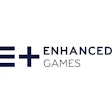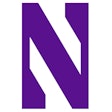Athleticism can be found in abundance among individuals with disabilities, if you know where to look.

She'll be joined on the court by Katie Holloway, who didn't let the fact she was born without a right fibula deter her from playing Division I college basketball for Cal State Northridge the past four seasons. Standing 6-foot-5 on her prosthetic limb, Holloway casts an imposing figure, too, when seated at the volleyball net. "Katie Holloway," says John Kessel, director of membership development and disabled programs for USA Volleyball, "is going to be roofing some people and kicking some ass in Beijing."
As much enthusiasm as Kessel voices for the talent on this year's sitting volleyball roster, he realizes that federal health privacy laws enacted within the past 10 years have made it harder to comb the disabled community at large for elite-level athletic talent. And he's not alone in this realization. Beginning with the return of its contingent from China, the Paralympic Division of the United States Olympic Committee will begin finalizing a nationwide grassroots talent identification program that will roll out in early 2009.
Mike Mushett, outreach and development director for U.S. Paralympics, calls talent identification one of the "great needs" of the Paralympic movement. Of the estimated 21 million Americans with physical disabilities and visual impairments, only 5 to 10 percent are active participants in sports and recreation, he says. "Number one, we want to reach many more of those 21 million people and get them involved in sports and recreation at whatever level they choose to get involved," Mushett says. "But we also have a great need for identifying talented individuals who could have the potential to become Paralympic athletes. In many of our sports, our elite-level talent pool is very shallow."
Making the U.S. Paralympic team, which for these Games numbers 210 athletes, is similar to the process that a would-be Olympian follows. Slots are awarded to individuals who have demonstrated elite-level performance in international competition and Paralympic trials. However, aspiring Paralympians don't often travel the same developmental pipeline of club, high school and college sports and perhaps junior national team competition as do their able-bodied Olympic counterparts. "Athletes with disabilities traditionally have not had those same types of opportunities available to them, so we're developing our own mechanisms and trying to build our own athlete pipelines," Mushett says. "Between winter and summer, there are 24 sports in the Paralympic program. If an individual with a disability is a good athlete, we should have the ability to introduce him or her to different types of sports and find out what a good match could be."
U.S. Paralympics (www.usparalympics.org) currently publishes a brochure that outlines which disabilities are accepted for each Paralympic event. The key to the talent ID program will be to get such materials into the hands of facility operators everywhere. Kessel, for one, advocates further educating facility staff as to current Paralympic performance standards. "Any personal trainers who see a disabled individual come into their facility know he or she is obviously serious enough about athleticism to work out," Kessel says. "Those trainers should know the current record for power lifts, for example, so that they can determine whether that person's natural talent puts him or her within striking distance. We would love it if everyone on staff were trained to make sure - in an unobtrusive but still powerful way - that these kids know about U.S. Paralympic opportunities. And when I say 'kids,' I mean under 40 or maybe even older in some sports."
Adds Mushett, "If someone who exhibits the talent and interest is identified, we can put him or her on a fast track as far as training and development."
Once discovered, most aspiring Paralympians continue training at their hometown facility - potentially creating some PR buzz for the private club or public rec center, Kessel says. U.S. Paralympics will assist in providing coaching if none can be found locally, according to Mushett, who adds that a relatively small percentage of athletes take up residency at established Olympic and Paralympic training centers in Colorado Springs or Chula Vista, Calif. Residency programs for team sports are being established, too, including one for sitting volleyball at the University of Central Oklahoma.
Mushett and Kessel both emphasize that even those who ultimately fail to make the U.S. Paralympic team nonetheless benefit physically, mentally and emotionally from their participation in sport. And as the overall talent pool deepens, the quality of life of each individual is buoyed. "One of our objectives is certainly to build as strong a Paralympic team as we possibly can," Mushett says. "But part of our mission is to ensure that there are a variety of sports participation opportunities for people with physical disabilities, regardless of their skill or interest level. It's very much a priority of ours."





































